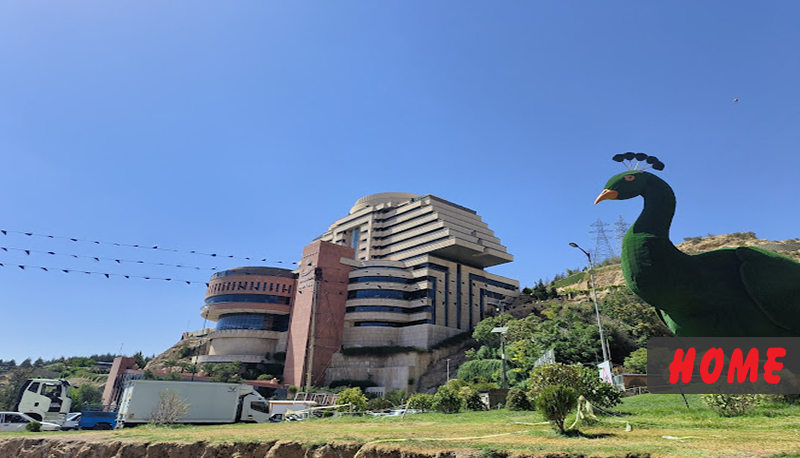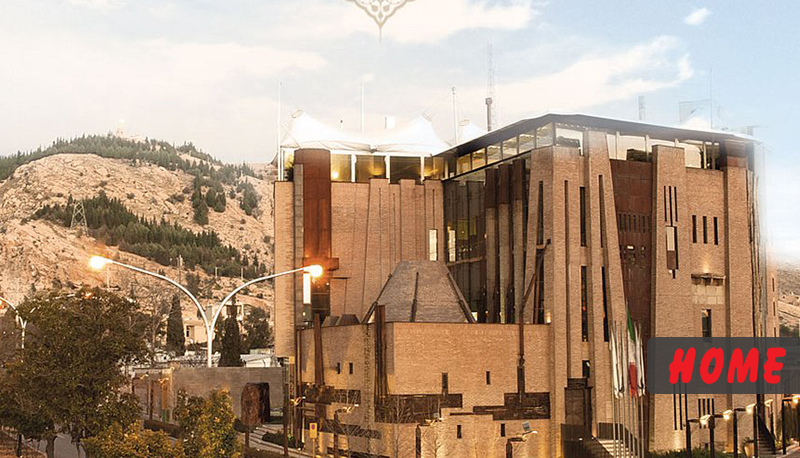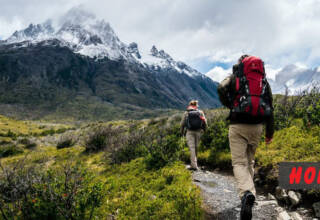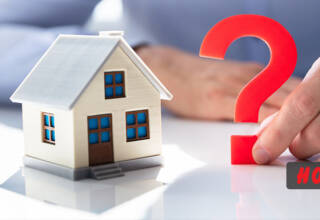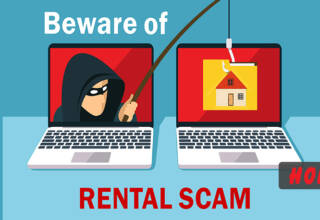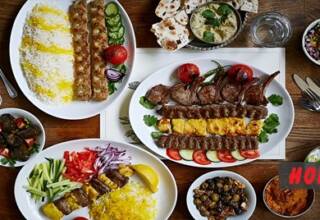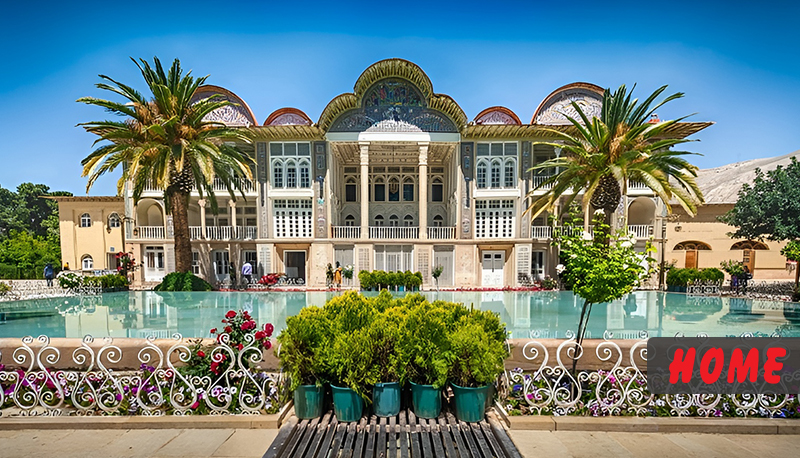
Shiraz is located in the southwest of Iran on the “Khoshk river” (The Dry River). It has a moderate climate and has been a regional trade center for over a thousand years. Shiraz is the oldest city of ancient Persia. Shiraz is regarded as the cultural capital of Iran and the city of poetry, gardens and love. Shiraz is famous for its laidback atmosphere as well as its many historical and natural sites. May 5th is named the day of Shiraz by approve of the Iranian Parliament, on this occasion, every year, special events will be held by the municipality of Shiraz.
Shiraz on Map
History
Shiraz is estimated to be more than 4000 years old. The name Shiraz is mentioned in cuneiform inscriptions from around 2000 BC found in southwest corner of the city. In the 13th century, Shiraz was a leading center of the arts and sciences due to its many scholars and artists. Hafez, whose poems have captured the hearts of many throughout the world, hailed from this city. The tombs of Hafez, Sa’di, the Khajou Kermani in the city are stunning structures erected in memory of these legendary poets.
Tripp Plans
- 1st day: Bazar-e Vakil market, Masjed-e Vakil, Moshir House, Hamam-e Vakil, Sharzeh and Saray-e Mehr restaurants (for lunch), Arg-e Karimkhani complex
- 2nd day: Nasir al-Molk Mosque, Shah Cheraaq, Sharzeh Restaurant (for lunch), Narenjestan-e Qavam House, Zaynat al-Molouk House
- 3rd day: Hafeziyeh Tomb, Sa’diyeh Tomb, Bagh-e Delgosha Garden, Haft Khan Restaurant (for lunch), Park-e Azadi Shiraz, Bagh-e Eram, Italian Restaurant Polparsi (Khakshenasi Street- for dinner)
- 4th day: Takht-e Jamshid (Persepolis), Naqsh-e Rostam – (restaurants around for lunch), Pasargadae ancient complex
- 5th day: Ecotourism and vising the old village: Qalat, the lost paradise on the earth with abundant springs, old trees, and deep valleys. The village has stairwell houses, often stretched from the slopes of the mountain to the summit.
- 6th day: Darvazeh Qur’an, The tomb of Khajou-ye Kermani, the restaurants of Shams al-Emareh and Shandiz or Haftkhan (for lunch), Luna Park Shiraz, Bagh-e Jahan Nama
- 7th day: Shopping from the Khalij-e Fars Tourist Complex, take a walk around the streets of Qasr al-Dasht in Shiraz before returning to your city or country and enjoy the wonderful gardens and old and newly woven fabrics.
Top Hotels
| Name | Stars | Address | Tel |
| Pars International Hotel | Five Star | Zand Boulevard, Shiraz | 071-32332255 |
| Homa Hotel | Five Star | Meshkinfam St, next to Azadi Park, Shiraz | 071-32288014 |
| Shiraz (Grand) Hotel | Five Star | Quran Square, Shiraz | 071-33660000 |
| Aryo Barzan Hotel | Four Star | Roudaki Avenue, Shiraz | 071-32247182/4 |
Top Restaurants
- Haft Khan Restaurant Complex: International, Middle Eastern, Persian
- Qavam Café & Restaurant: Café, Persian
- Soofi Traditional Restaurant: Italian, Café, Armenian
- Sharzeh Restaurant: Middle Eastern, Persian, Vegetarian Friendly
- Shapouri Garden Traditional Restaurant: Persian, Middle Eastern
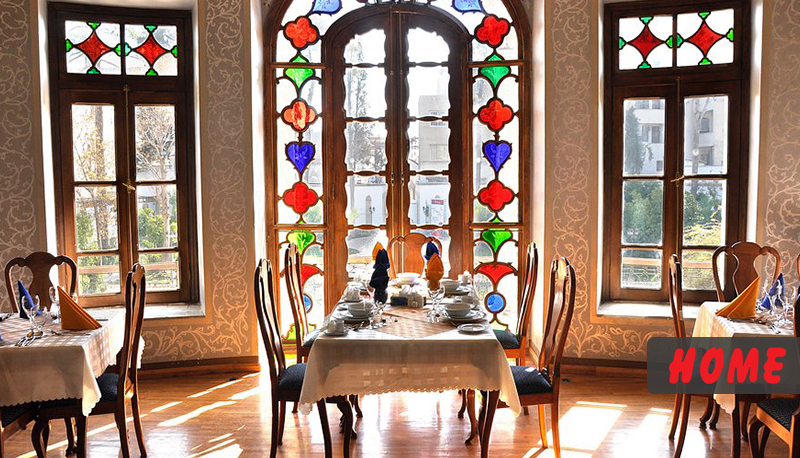
How to Get There
- Airplane: Shiraz Airport is the main international airport of the province and the second in the country. Shiraz is along the main route from Tehran to southern Iran.
- Train: Since 2010, Shiraz is connected to Tehran by train. Daily trains connect both cities leaving in the afternoon and arriving the morning after.
- Bus: Shiraz is accessible via freeways to Isfahan, Kerman, Bushehr, Ahvaz and Yasouj, and accessible via road to Bandar Abbas.
Persepolis Palaces (Takht-e Jamshid)

Glimpse
Founded by Darius I in 518 B.C., Persepolis was the capital of the Achaemenid Empire. It was built on an immense half-artificial, half-natural terrace, where the king of kings created an impressive palace complex inspired by Mesopotamian models. The importance and quality of the monumental ruins make it a unique archaeological site. Persepolis was the ceremonial capital of the Achaemenid Empire (ca. 550-330 BC). It is situated on the northeast of Shiraz city in Fars Province. The earliest remains of Persepolis date back to 515 BC. It exemplifies the Achaemenid style of architecture. UNESCO declared the ruins of Persepolis a World Heritage Site in 1979.
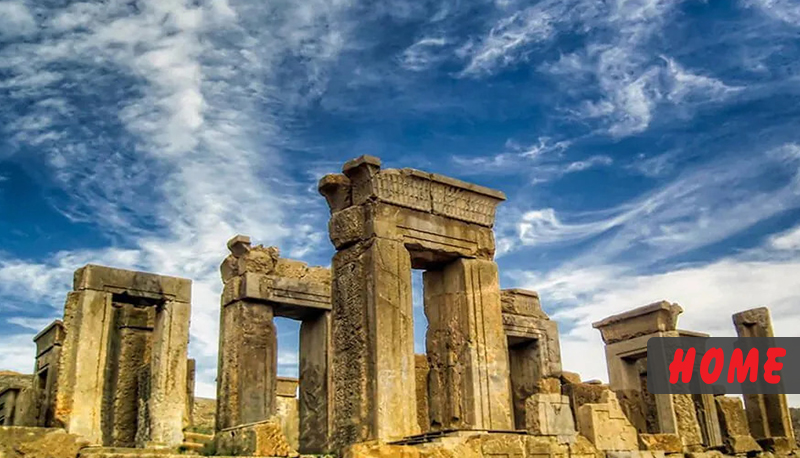
Name
The English word Persepolis is derived from Ancient Greek Persepolis, meaning “the Persian city” or “the city of the Persians”. To the ancient Persians, the city was known as Parsa, which is also the word for “Persia”. Due to the belief among Late Antiquity Persians that the monuments were built by Jamshid, an Iranian mythological figure, the site has been known as Takht-e-Jamshid.
General Information:
Name: Ancient Achaemenid complex of Persepolis (Takht-e Jamshid)
Location: Marv-Dasht
Age: Achaemenid period
Builder: Darius l, Xerxes and Artaxerxes
Special Features: Power Symbol of the Achaemenid Empire
UNESCO World Heritage: √
Visiting Time: 8:00 to 18:00
Duration of Visit: About 2 hours
Weekly Holiday: Does not have
Annual Holidays: Formal holiday based on solar calendar
Entrance Fee: 350.000 Tomans
Suggestions:
Best Time to Visit: May to October – In the cool weather (early morning)
Important Parts to Visit: All Sections
Nearest Tourist Attractions: Achaemenid Museum, Naqsh-e Rostam
Facilities Available Around:
Hotels & Lodging Houses
Restaurants
Shops and Supermarkets
Network Coverage
Gasoline
Hafezieh (Tomb of Hafez)

Glimpse
The Tomb of Hafez, along with its surrounding complex known as Hafezieh, are two memorial landmarks located at the northern edge of Shiraz, honoring the famous Persian poet Hafez. Set within the peaceful Mousalla Gardens, on the north side of a seasonal river, these open pavilion structures hold Hafez’s marble tomb. The current design, completed in 1935 by French architect and archaeologist André Godard, was built on the site of earlier buildings—most notably one from 1773. Today, the tomb, its beautiful gardens, and nearby memorials for other cultural figures are among the main attractions for visitors and poetry lovers in Shiraz.
History
Hafez was born in Shiraz in 1315 and died there in 1390. He is a beloved figure of the Iranian people, who learn his verses by heart, Hafez was prominent in his home town and held a position as the court poet. In his memory, a small, dome-like structure was erected in Shiraz near his grave at Golgast-e Mossalla in 1452 at the order of Babur Ebn-Baysunkur, a Timurid governor. The Golgast-e Mossalla were gardens that featured in Hafez’s poetry. With a surface of over 19,000 square meters, the gardens were also home to one of Shiraz’s cemeteries, and Babur had a pool built here at the same time as the memorial. Believing they were ordered by omens in Hafez’s poetry, Abbas I of Persia and Nader Shah both carried out separate restoration projects in the following 300 years. A much more substantial memorial was constructed in the gardens in 1773 during the region of Karim-Khan-e Zand.
Architecture
Hafezieh has about 2 hectares’ area and is formed from two northern and southern courtyard separated by a hall. This complex has 4 entrance-exit doors. The main door is located on the south side, two doors are on the west side and one door is on the east side.
Hall of Hafezieh which is from Zandieh era, is 56 meters long and 8 meters wide and is formed by 20 stone pillars, each with 5 meters’ height. Formerly the Hall consisted of four pillars and four rooms that have been removed later from the area. There are two rooms in the East and West sides of the Hall, one belongs to the Cultural Heritage Organization and the other one belongs to the Shrine Office. The hall’s architectural style is related to the Achaemenid and Zands period. The shrine’s porch consists of two rows of staircases; each row contains 9 stairs. In Persian literature, the 9 is the number of skies and considered sacred. The northern part contains 8 entrance and exit; The Shrine also consists of 8 stone pillars. The number 8 symbolizes the eighth century (the century Hafez was lived in) and the eight doors of paradise.
The exterior of the dome of the shrine, is a symbol of sky like the hat of Turkish dervishes. The inside of the dome is decorated with different theosophical colors; Turquoise blue (symbol of heaven), amethystine red (symbol of eternal wine), black and white (symbol of day and night) and burnt brown (symbol of earth).

How Iranians visit the Mausoleum of Hafez?
For Iranians, visiting the Hafez tomb is like going to a relative’s tomb. The feelings, of course, are more with respect than grievance. Some bring rosewater to wash the tombstone and put some flowers on the grave. Then, they touch the tombstone with few fingers praying by reciting a chapter of Quran to ask for blessing of his soul. Some proceed to request Hafez to talk to them through his poems and tell them about the state of their lives or give them some wise advice through the words in his poems. Then, they open their eyes and open the book on any page it randomly opens and continue to read it enthusiastically. The concepts and topics mentioned in Divan-e-Hafez, his complete works, are so life-related and overwhelmingly attractive that one connects to them easily as if the poet is living at this time and offers us his wise words in a friendly manner to enrich our lives. That’s why many love him and keep reading his poems on a daily basis.
General Information:
Age: Zand period
Architectural Style: Achaemenian-Zand
Visiting Time: 8-23 and in the second six months of the year 8-22.30 – Day and night
Entrance Fee: 30.000 Tomans
Weekly Holiday: Does not have
How to Get There
- Tehran to Shiraz: Beihaqqi or south Bus Terminal/ Train station/ Mehr-Abad airport (Distance from Tehran to Shiraz is 931 km)
- Shiraz to Hafezieh: By Taxi
- Address: Hafezieh, between Adabiat and Hafezieh intersection, Shiraz city, Fars province, Iran
Suggestions:
Best Time to Visit: Spring
Nearest Tourist Attractions: Vakil Bazar
Facilities Available Around
Hotels & Lodging Houses
Restaurants
Shops and Supermarkets
Network Coverage
Gasoline
Nearest Airport: Shiraz airport
Nearest Train Station: Shiraz train station
Vakil Complex
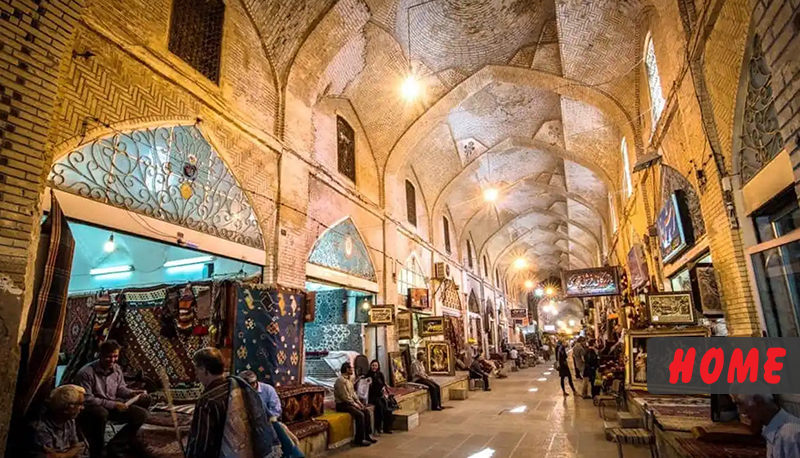
Glimpse
Vakil Bazar in Shiraz is the main section of the Shiraz Bazar which was built in 11th Century by Karim-Khan as part of a plan to make Shiraz into a prominent trading center. This architecturally beautiful building is a trade hub for merchants selling spices, rugs, handmade copper pieces, antiques, Persian sweets and much more.
Vakil Bazar has a really vibrant and bustling atmosphere. This isn’t just a tourist trap like you find at similar spots around the world. Vakil Bazar is a place where locals actually do their shopping.
Considered to be the most beautiful Bazar in Iran, Vakil Bazar’s gorgeous vaulted brick ceiling regulates the temperature of the building by keeping it cool in summer and warm in winter. This makes it a great place to escape the heat which can be suffocating at times during the summer.
The halls are filled with the smell of spice which lingers throughout the Bazar. It is an amazing sensory experience. As with everywhere we visited in Iran, the people here were incredibly friendly and happy to say hello and chat.
There is a very larger selection of handcrafted items on offer. If you’re interested in buying something we would recommend going with a local. Despite the fact people Vakil Bazar’s attractions are not limited to shopping, there are also numerous cafes, a bath house, and several restaurants that you can visit.
Find a little restaurant that serves Dizi (a meat stew) and Faloudeh (rice noodles served with a sweet rose syrup) which are synonymous with Shiraz cuisine. It’s a must-see while you are at the Bazar.
Vakil Bathhouse

Vakil Bath is an old public bath in Shiraz. It was a part of the royal district constructed during Karim-Khan-e Zand’s reign, which includes Arg of Karim-Khan, Vakil Bazar, Vakil Mosque and many administrative buildings. During the time of its construction, 18th Century, private baths in homes were rare and using them was considered a royal treatment. The entrance hall of the bath house is where the shoes and clothes were changed before entrance. The historical bath house was not only famous for its uniqueness and diversity of people who would attend but also for its beautiful architecture featuring traditional Persian dome style ceilings. The turquoise-colored tiles that decorate the ins and outs of the buildings, and others, are also a historically famous trend of Persian architecture. What you see as concrete now was once glimmering colorful tiles that covered floor and ceiling. There was a special room where was a common place for people to sit down, socialize, and do work as they waited their turn for a bath. Stepping through low arched hallways to enter other rooms, one can get a feel for the bathing process. One of the last rooms features a place where the people wait their turns for massages, scrubs, and even getting their teeth pulled. The building is used as a museum now.
Saraye Moshir

At the end part of south Vakil Bazar (left side) you can visit a 2-floor shopping center of handicrafts. Very beautiful historical place with big court yard at the middle containing a big pool make this place more beautiful in spring.
We suggest you buy original Khatam (Shiraz handicraft) in this place. You can find many beautiful wooden and metal handicrafts such as Gabbeh in this Bazar. You can find a good faloudeh (delicious Shirazi dessert) and good restaurant near this Bazar.
General Information:
Name: Vakil Bazar; The old and traditional Bazar of Shiraz
Age: Zandieh Dynasty
Builder: Karim-Khan-e Zand
Visiting Time: 7:15 to 22:15
Duration of Visit: One hour
Annual Holidays: Official Holidays and days of mourning
How to Get There
- Tehran to Shiraz: Beihaqqi or south Bus Terminal/ Train station/ Mehr-Abad airport (Distance from Tehran to Shiraz is 931 km)
- Shiraz to Vakil Bazar/ Bathhouse: By Taxi
- Address: Next to Vakil Mosque, after City Hall Sq, Shiraz city, Fars’s province, Iran
Suggestions:
Best Time to Visit: During Nowrouz
Important Parts to Visit: Rasteh of Bazzazzan and other parts of the Bazar
Similar Relics and Places: QeySarieh Bazar of Lar
Nearest Tourist Attractions: Vakil Mosque, Vakil Bath, Arg of Karim-Khan, Saray-e Moshir
Facilities Available Around
Hotels & Lodging Houses
Restaurants
Shops
Network Coverage
Gasoline
Nearest Airport: Shiraz airport
Nearest Train Station: Shiraz train station

